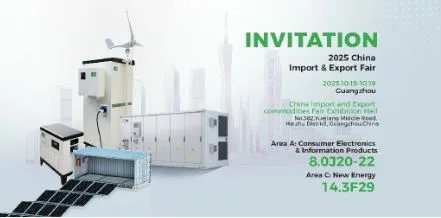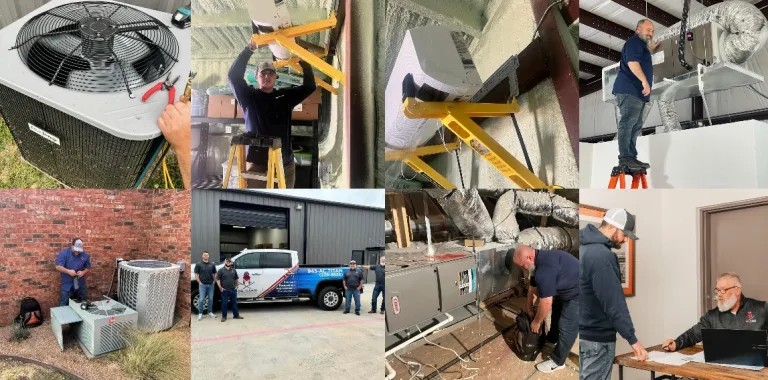How Selling Surplus Printer Ink Can Save Businesses Money and Reduce Waste
Businesses frequently find themselves with extra printer toner cartridges in today’s corporate environment. These extra supplies may amount to a substantial waste of funds and storage space. Nevertheless, astute companies are finding that they can solve this issue and benefit the environment at the same time.
The Problem of Surplus Toner Accumulation
Why Businesses End Up with Excess Inventory
Many companies face the challenge of surplus toner for several reasons. Office managers often over-order supplies to avoid running out during critical periods. This bulk purchasing strategy seems smart but can lead to storage issues.
Equipment upgrades create another common problem. When businesses replace old printers with newer models, the existing toner cartridges become useless. These cartridges often sit in storage rooms gathering dust.
Budget planning also contributes to surplus accumulation. Companies may purchase annual supplies at the end of their fiscal year. This approach helps with budget allocation but can result in excess inventory.
The Hidden Costs of Stockpiling
Storing surplus toner comes with unexpected expenses. Warehouse space costs money whether it holds useful inventory or not. Climate-controlled storage adds to these expenses.
Insurance costs increase with stored inventory value. Companies must protect their assets, including unused office supplies. Security measures also add to the total cost of storage.
Many firms fail to consider the expiration dates of toner cartridges. Over time, expired cartridges become less effective. This degradation turns valuable supplies into worthless waste.
Financial Benefits of Selling Surplus Toner
Immediate Cash Recovery
Selling unused toner provides instant financial benefits. Companies can recover a significant portion of their original investment. This recovered money can fund other business priorities.
The resale market for original toner cartridges remains strong. Many smaller businesses seek affordable alternatives to new cartridges. You can make money and satisfy their demands with your excess merchandise.
Improving cash flow quickly aids in improved financial management for firms. Instead of money sitting idle in storage, it becomes active working capital. This improvement can fund growth opportunities or emergency expenses.
Reducing Storage and Insurance Costs
Clearing surplus inventory frees up valuable storage space. This space can accommodate products that generate active revenue. Reduced storage needs can lower facility costs over time.
Insurance premiums decrease when inventory levels drop. Companies save money on property insurance and theft coverage. These savings add to the financial benefits of selling surplus toner.
Storage area maintenance expenses also go down. There is less need for cleaning, organizing, and security when there is less inventory. Over time, these savings add up to considerable cost savings.
Tax Advantages and Accounting Benefits
Businesses might profit from tax advantages when they sell excess inventory. The transaction might be considered a capital gain or regular business income. Expert accountants can assist in optimizing these benefits.
Taxable income may be decreased by inventory write-offs for damaged or expired toner. However, selling before expiration generates better financial outcomes. This strategy requires careful timing and planning.
Financial statements are improved by increased sales cash flow. Lending terms and credit ratings can both be enhanced by higher liquidity ratios. These advantages go beyond the money made from the sale right away.
Environmental Impact and Sustainability
Reducing Electronic Waste
The environmental benefits of selling surplus toner extend beyond simple recycling. Reusing cartridges prevents them from entering waste streams prematurely. This reduction helps decrease electronic waste accumulation.
It takes a lot of energy and raw resources to manufacture new toner cartridges. This environmental load is lessened by extending the functional life of current cartridges. Every reused cartridge represents saved manufacturing resources.
Specialized facilities are needed for the proper disposal of toner cartridges. Numerous cartridges get up in ordinary landfills, where they have no place. Selling surplus inventory keeps these materials in productive use longer.
Supporting Circular Economy Principles
The goal of the circular economy is to prolong the useful life of materials. This sustainable business strategy is supported by the sale of excess toner. Companies participate in resource conservation while generating profit.
Small businesses benefit from access to affordable original toner supplies. This access helps them operate more efficiently while supporting sustainability goals. Everyone wins in this arrangement.
Corporate sustainability reporting improves when companies actively reduce waste. Selling surplus inventory demonstrates environmental responsibility. This positive image can attract environmentally conscious customers and partners.
Carbon Footprint Reduction
Transportation emissions decrease when local businesses can access nearby surplus inventory. This reduction happens instead of shipping new cartridges from distant manufacturing facilities. Shorter supply chains benefit the environment.
Manufacturing emissions avoid completely when existing cartridges find new users. The energy required to produce replacement cartridges remains unused. This conservation adds up across many transactions.
Packaging waste also decreases when surplus cartridges go directly to users. New cartridge packaging often includes multiple layers of plastic and cardboard. Reusing existing inventory eliminates this waste stream.
How SellToner Simplifies the Process
Easy Inventory Assessment
SellToner makes selling surplus toner simple and straightforward. The platform accepts various toner cartridge brands and models. Businesses can quickly determine which cartridges have resale value.
The evaluation process requires minimal time and effort from busy office managers. Online tools help identify cartridge compatibility and market value. Businesses find the selling process appealing due of its efficiency.
Fair price for both buyers and sellers is guaranteed by professional evaluation. The best pricing strategies are determined with the use of market expertise. Everyone involved in the transaction gains from this knowledge.
Streamlined Sales Process
SellToner’s selling method removes the hassles of traditional marketplaces. No need to manage payment processing, deal with individual purchasers, or generate listings. The platform manages these details professionally.
Businesses get their money quickly when payments are processed quickly. Financial planning and cash flow management are aided by this quickness. Payment delays can make running a business more difficult.
Professional management lowers the possibility of payment disputes or fraud. Reliability and security are offered by established platforms. Businesses can sell with confidence thanks to this protection.
Nationwide Reach and Market Access
SellToner connects sellers with buyers across a wide geographic area. This expanded market increases the likelihood of finding buyers quickly. Local markets might not have sufficient demand for surplus inventory.
Bulk sales opportunities exist for businesses with large quantities of surplus toner. Commercial buyers often need substantial quantities for their operations. These sales can be more profitable than individual transactions.
Market expertise helps identify the best timing for sales. Seasonal demand patterns affect toner cartridge prices. Professional platforms understand these market dynamics.
Getting Started with Surplus Toner Sales
Inventory Evaluation and Preparation
Make a complete inventory of any extra toner cartridges to start. Verify cartridge compatibility, packing condition, and expiration dates. The items that have commercial worth are determined by this appraisal.
To make evaluation easier, arrange cartridges according to brand, model, and condition. To make the assessment process go more quickly, group related items together. Time is saved during the selling process when things are organized properly.
Take pictures and provide thorough descriptions of your inventory. Documentation of the highest caliber aids purchasers in making wise choices. Sales are accelerated and questions are decreased with clear information.
Choosing the Right Selling Platform
Examine several websites that focus on selling toner cartridges. Examine commission rates, conditions of payment, and the caliber of customer support. The platform you choose has a big impact on your selling experience.
Examine the comments and endorsements left by other companies that have sold excess inventory. Their backgrounds offer insightful information about platform dependability. Select platforms with a solid track record and happy users.
Think about the platform’s customer base and market reach. Faster sales at competitive prices are more likely in larger networks. Results from specialized platforms are frequently superior to those from general marketplaces.
For businesses or individuals holding surplus unused toner, Sell Toner offers a simple way to turn excess inventory into cash while helping others access affordable original toner supplies.
Implementation and Ongoing Management
Start with a small batch of additional cartridges to test the selling procedure. This approach facilitates strategy optimization and platform comprehension. Learn from early experiences before growing.
Watch market pricing and adjust your expectations as needed. Toner cartridge prices fluctuate based on supply and demand. Keep abreast with market conditions for better results.
Create a schedule for assessing and getting rid of extra inventory. The accumulation of unused or expired cartridges is prevented by routine maintenance. Regular sales help to maintain healthy inventory levels.
Maximizing Returns from Surplus Sales
Timing and Market Conditions
Understanding market timing can significantly improve your returns from surplus toner sales. The need for office supplies frequently rises during back-to-school seasons. Buying possibilities are also created during business budget planning periods.
Regularly check market trends and rival pricing. Set competitive prices for your excess inventory while keeping your profit margins manageable. Overpricing might lower total returns and postpone sales.
Take into account the seasonal variations that impact the need for toner cartridges. Market conditions are influenced by company cycles, tax season, and academic semesters. Having good timing can help you sell more.
Quality Control and Presentation
Make sure the cartridges you sell meet high requirements. Make sure the cartridges have not been damaged during storage and check the box’s integrity. Products of superior quality sell faster and cost more.
Give your excess inventory precise descriptions and crisp images. Genuine representation boosts customer trust and reduces return demands. Being forthright and truthful improves your reputation as a reliable supplier.
Until they are sold, cartridges should be stored in a healthy state. Controlling humidity and temperature helps maintain cartridge quality. Your investment is safeguarded by proper storage until it is turned into cash.
Common Challenges and Solutions
Overcoming Initial Hesitation
Many companies are hesitant to sell excess goods because they are not familiar with the procedure. To gain experience and confidence, start small. Larger transactions gain pace when early sales are successful.
Address issues with quality control and cartridge authenticity. Reputable websites check the condition and validity of cartridges. In transactions, this authentication safeguards both buyers and sellers.
Inform employees about the advantages of selling excess goods as well as the procedure. Implementation goes more smoothly and successfully when there is team buy-in. Initiatives that are useful may be hampered by resistance to change.
Managing Logistics and Operations
Coordinate surplus sales with regular inventory management processes.If at all possible, include marketing activities into current workflows. Distinct systems may lead to inefficiency and confusion.
When selling excess inventory, consider the needs for packaging and delivery. Some platforms handle logistics while others require seller involvement. Understand requirements before committing to sales.
For accounting and tax purposes, keep track of any surplus sales. Financial reporting and compliance needs are supported by appropriate paperwork. Good records prevent problems during audits.
Success Stories and Case Studies
Small Business Transformations
Many small businesses have successfully converted surplus toner into working capital. A local accounting firm recovered $3,000 from outdated cartridges after upgrading their equipment. This money funded their new office setup.
A legal practice reduced storage costs by 40% after selling accumulated surplus inventory. They reinvested the proceeds into digital document management systems. The transformation improved both efficiency and profitability.
Marketing agencies often accumulate color toner cartridges during equipment transitions. One agency generated $5,000 from surplus sales, funding a team training program. Strategic surplus management supports business growth.
Corporate Success Examples
Large corporations report significant benefits from systematic surplus toner management. A national retail chain recovered over $50,000 annually from surplus inventory sales. This program now operates as standard business practice.
Insurance companies with multiple offices often consolidate surplus inventory for bulk sales. One company reported 60% cost recovery on surplus cartridges. These savings directly improved their operational efficiency.
Technology companies frequently upgrade printing equipment, creating surplus inventory opportunities. Strategic sales of obsolete cartridges fund new equipment purchases. This approach maximizes technology investment returns.
Future Trends and Opportunities
Growing Market Demand
The market for refurbished and surplus office supplies continues expanding. Small businesses and startups seek cost-effective alternatives to new supplies. This demand creates opportunities for surplus inventory holders.
Environmental consciousness drives increased interest in reused products. Companies want to demonstrate sustainability commitment through purchasing decisions. Surplus toner sales support these corporate responsibility goals.
Remote work trends increase home office supply needs. Individual professionals need affordable cartridge options for home printing. This expanded market benefits surplus inventory sellers.
Technology Integration
Digital platforms continue improving the surplus inventory selling experience. Mobile apps and automated pricing tools simplify the process. Technology reduces barriers to entry for new sellers.
Artificial intelligence helps optimize pricing and timing decisions. Smart algorithms analyze market conditions and recommend selling strategies. These tools improve returns for surplus inventory holders.
Blockchain technology may provide enhanced authentication and tracking capabilities. Verified authenticity increases buyer confidence and selling prices. Innovation continues improving the surplus sales market.
FAQs
What types of toner cartridges can I sell as surplus?
You can sell most original brand-name toner cartridges including HP, Canon, Brother, Epson, and Lexmark. The cartridges should be unopened, unexpired, and in original packaging. Compatible and remanufactured cartridges typically have lower resale value but may still be sellable depending on market demand.
How do I determine the value of my surplus toner inventory?
The value depends on several factors including brand, model compatibility, age, and market demand. Check current retail prices and subtract 30-60% for typical resale values. Newer cartridges for popular printer models generally command higher prices. Online valuation tools can provide estimates for specific cartridge models.
What condition do cartridges need to be in for sale?
Cartridges should be in original, unopened packaging with no damage to boxes or seals. They should not be expired, though cartridges approaching expiration may still have some value. Any signs of leakage, damage, or tampering will significantly reduce value or make cartridges unsellable.
How long does the selling process typically take?
The timeline varies depending on cartridge type and market demand. Popular models may sell within days, while specialized cartridges might take several weeks. Platform processing, payment, and shipping typically add 1-2 weeks to the total timeline. Setting realistic expectations helps plan cash flow accordingly.
Are there any legal considerations when selling surplus toner?
Generally, selling legally purchased surplus inventory is permissible. However, check any supplier agreements for restrictions on resale. Some corporate purchasing contracts may include clauses limiting resale rights. Consult with legal counsel if you have concerns about specific agreements.
What happens if cartridges don’t sell?
Reputable platforms typically return unsold cartridges at no cost to the seller. Some platforms may offer reduced prices for difficult-to-sell items. Alternatively, many platforms provide recycling services for cartridges with no resale value, supporting environmental responsibility.
How are payments processed and when do I receive money?
Most platforms process payments within 24-48 hours of sale confirmation. Payment methods typically include direct deposit, check, or PayPal transfer. Some platforms offer expedited payment for additional fees. Payment timing depends on the platform’s specific policies and procedures.
Can I sell partially used or opened cartridge packages?
Most platforms only accept completely unopened cartridges in original packaging. Opened packages significantly reduce value and marketability. Some specialized buyers may accept opened cartridges at heavily discounted prices. Check platform policies before listing opened items.
What documentation do I need to keep for tax purposes?
Maintain records of original purchase prices, dates, and sale proceeds for all transactions. Keep receipts, invoices, and platform transaction confirmations. Document any related expenses like shipping or platform fees. Consult with tax professionals about proper reporting requirements for your situation.
Is selling surplus toner worth the effort for small quantities?
The economics depend on cartridge values and quantities involved. High-value cartridges may be worth selling individually. Small quantities of low-value cartridges might not justify the effort. Consider bundling small quantities or waiting until you accumulate larger amounts for better efficiency.






